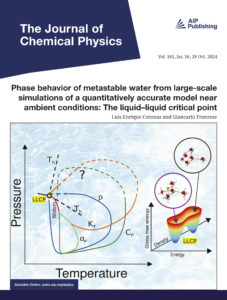The molecular mechanisms of water’s unique anomalies are still debated. Now, a study developed at the Statistical Physics of Bio-Nano Complex Matter group, led by Dr. G. Franzese, has provided new insights into water’s behavior under extreme conditions. The interest lies in how this behavior controls the unique properties of water at ambient conditions.
Using multiscale modeling and advanced numerical techniques, the team achieved predictions that align with recent experimental data, highlighting that quantum many-body interactions govern the liquid-liquid critical point and the origin of water anomalies. These findings have significant implications for nanotechnology and biophysics, including substantial cooperative fluctuations in the hydrogen bond network at scales larger than 10 nm, even at temperatures relevant to biopreservation, thereby advancing our understanding of water’s behavior under varied conditions.
This work has been part of a former IN²UB predoctoral researcher and been selected to feature the journal`s cover.

Reference: Phase behavior of metastable water from large-scale simulations of a quantitatively accurate model near ambient conditions: The liquid–liquid critical point. L.E. Coronas and G. Franzese. J. Chem. Phys. 161, 164502 (2024). https://doi.org/10.1063/5.0219313

